How The Environment Foundation Made A Difference In 2015

You got either a sweet hat, a cool bag made from our old ski school uniform, or a POW thermos—but what was really accomplished with the donation you made to the Environment Foundation with every paycheck?
During 2015, $221,013 was donated to thirty-one projects. The work you supported includes:
During 2015, $221,013 was donated to thirty-one projects. The work you supported includes:
- providing professional development opportunities for local teachers to bring experiential environmental education to the classroom;
- improving local river health;
- engaging young people in stewardship activities, such as building trails on public lands;
- investing in renewable energy;
- promoting ecological literacy in our schools; and
- encouraging responsible energy development on our public lands.
2015 Highlights

Environment Foundation Annual Report
Rfov Turns 20
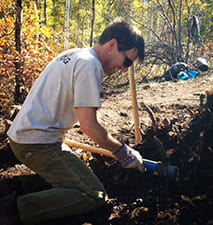
For Roaring Fork Outdoor Volunteers (RFOV), 2015 marked twenty years of organizing volunteers to maintain and restore the many well-loved — and in some cases, over-loved — trails in our valley. Without critical maintenance, our local trails deteriorate, which can degrade surrounding habitat. The Environment Foundation awarded RFOV $5,000 annually from 2015 through 2017. Join RFOV this summer for work days — a great way to connect with others. The weekend-long projects typically feature delicious dinners at the end of the work day. (Pro tip: the penne with smoked trout is not to be missed!)
Nobody Likes Traffic, Especially Not In The Wilderness
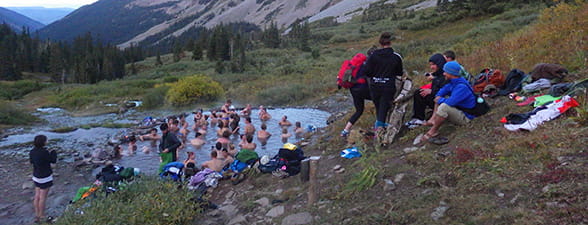
With more than 12 million annual visitors to 2.3 million acres of public land, the White River National Forest (WRNF) is the most heavily visited National Forest in the United States. Over the past nine years, the Maroon Bells-Snowmass Wilderness area has seen significant increases in visitation, creating experiences more akin to Disneyland than A River Runs Through It. A $10,000 grant allows the Forest Service to evaluate the potential of using a permit system to moderate access to Conundrum Hot Springs and maintain a wilderness experience when hiking the Four Pass Loop.
Educating The Environmentalists Of The Future

Aspen Center for Environmental Studies (ACES) works to inspire a lifelong commitment to the environment by informing young people’s understanding of the world in which they live. ACES youth-education programs reach students more than 65,000 times each year in 45 schools. ACES runs three full-time environmental science classrooms in the public elementary schools of Aspen, Basalt, and Carbondale, and offers experiential field programs at Hallam Lake, Rock Bottom Ranch, and several other outdoor learning sites across Pitkin, Garfield, and Eagle Counties. Students take part in hands-on exploration of local watershed systems, sustainable energy sources, the dynamics of ecological systems, and a wide range of other topics and tools that will be critical for future generations to find solutions to social and environmental issues.
Please Don't Drill Baby, Drill
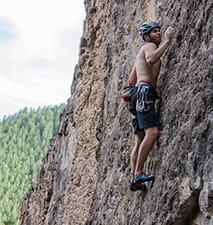
Comprised of outdoor recreationalists, wilderness activists, hunters, anglers, and ranchers, the Thompson Divide Coalition (TDC) is a medley of unlikely allies that all believe that the Thompson Divide area must be protected from future threats of energy extraction. Whatever their motivation, each group recognizes that the critical wildlife habitats, pristine rivers and streams, and stunning natural environments that make up the Divide are too special to drill. The Environment Foundation board is proud to stand with TDC and support their ongoing efforts to secure permanent protection.
Solar Rollin' To The Future
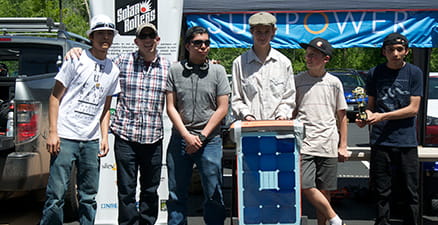
Energetics Education’s Solar Rollers Program engages local students to develop solar-powered race cars in collaborative teams that combine engineering, design,and physics to build the fastest vehicle. Competing against other local teams (and, soon, teams from other parts of the country), the students learn to work together toward a common goal with minimal outside support. These little cars represent a valuable opportunity for students to become immersed in studying energy-based solutions to climate change — like the matchbox cars from childhood, except more likely to help save the world.
Tell Me More

Environment Foundation Annual Report
$2.8 million to date!
Since its inception in 1998, the Environment Foundation has supported 469 projects through more than $2.8 million in grants. Matched in whole or in part by the Aspen Community Foundation and the Aspen Skiing Company Family Fund, donations from your paycheck go a long way to ensure that the ‘backyard’ we enjoy today remains that way for generations to come.
Who decides how to spend your contributions?
This winter, the Environment Foundation welcomed four new board members to the team: Scott Wilson from the Limelight Hotel; Peter Santini, who leads the charge on summer business; Blake Robinson, from Ticketing and Ski School; and Bethany Spitz, from Mountain Human Resources. They join a very capable group of eleven representing all facets of our company. In a few weeks, the team will come together—each team member having reviewed numerous grants and put pointed questions to applicants—to determine how best to invest your funds in our local environment. In addition to making grant decisions, your board spends time getting to know grantees and learning about environmental issues throughout the year during site visits and informal information sessions.
Sounds awesome — I want to join!
You’re not alone! Every year more than thirty employees apply to join the board, but limited space means many are turned away. To address this, your board members opted to shorten their terms from four years to three, allowing more employees to serve. Regardless of term length, board members leave with a newfound appreciation for the work of many nonprofit organizations and a deeper understanding of the environmental issues that face our valley. In this way, the foundation is much more than an organization that gives away some cash. It’s really a training ground for community philanthropists and environmental advocates.
Since its inception in 1998, the Environment Foundation has supported 469 projects through more than $2.8 million in grants. Matched in whole or in part by the Aspen Community Foundation and the Aspen Skiing Company Family Fund, donations from your paycheck go a long way to ensure that the ‘backyard’ we enjoy today remains that way for generations to come.
Who decides how to spend your contributions?
This winter, the Environment Foundation welcomed four new board members to the team: Scott Wilson from the Limelight Hotel; Peter Santini, who leads the charge on summer business; Blake Robinson, from Ticketing and Ski School; and Bethany Spitz, from Mountain Human Resources. They join a very capable group of eleven representing all facets of our company. In a few weeks, the team will come together—each team member having reviewed numerous grants and put pointed questions to applicants—to determine how best to invest your funds in our local environment. In addition to making grant decisions, your board spends time getting to know grantees and learning about environmental issues throughout the year during site visits and informal information sessions.
Sounds awesome — I want to join!
You’re not alone! Every year more than thirty employees apply to join the board, but limited space means many are turned away. To address this, your board members opted to shorten their terms from four years to three, allowing more employees to serve. Regardless of term length, board members leave with a newfound appreciation for the work of many nonprofit organizations and a deeper understanding of the environmental issues that face our valley. In this way, the foundation is much more than an organization that gives away some cash. It’s really a training ground for community philanthropists and environmental advocates.
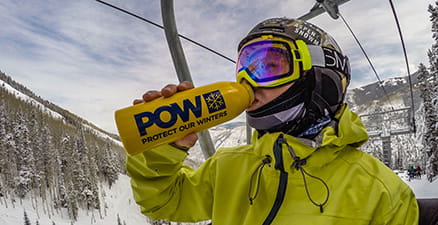
AND WHAT ABOUT THAT SWAG FROM CHINA — ARE YOU GUYS A BUNCH OF HYPOCRITES?
Every so often, we get questions about the source of the swag we give away. Yes, some of it is made in China, but some is made right here in the U.S. of A. The tote bags crafted from old ski school uniforms? They were made forty miles from Aspen by a sewing cooperative that offers job-training skills for single moms working to get back on their feet. In fact, over the past four years, thirty local women are now back in the workforce supporting their families thanks to companies like ours shuttling business to them.
Every so often, we get questions about the source of the swag we give away. Yes, some of it is made in China, but some is made right here in the U.S. of A. The tote bags crafted from old ski school uniforms? They were made forty miles from Aspen by a sewing cooperative that offers job-training skills for single moms working to get back on their feet. In fact, over the past four years, thirty local women are now back in the workforce supporting their families thanks to companies like ours shuttling business to them.
We just took delivery of some schweeet Liberty bottles. They are BPA-free and made in Washington from recycled aluminum. You can’t get a better product for drinking water!
And those items that do say, “Made in China?” We work with a swag vendor from Canada called Fairware, which literally stakes its brand to sourcing responsible swag. Fairware ensures that the factories it works with are audited to ensure fair labor practices and responsible production to reduce environmental impact. If you are really interested, we can give you lots of background, but suffice it to say nothing we buy is purchased without ensuring the producers are aligned with your values.
If you have ideas or suggestions or you’re inspired to donate a little more, please email ef@aspensnowmass.com.
And those items that do say, “Made in China?” We work with a swag vendor from Canada called Fairware, which literally stakes its brand to sourcing responsible swag. Fairware ensures that the factories it works with are audited to ensure fair labor practices and responsible production to reduce environmental impact. If you are really interested, we can give you lots of background, but suffice it to say nothing we buy is purchased without ensuring the producers are aligned with your values.
If you have ideas or suggestions or you’re inspired to donate a little more, please email ef@aspensnowmass.com.
